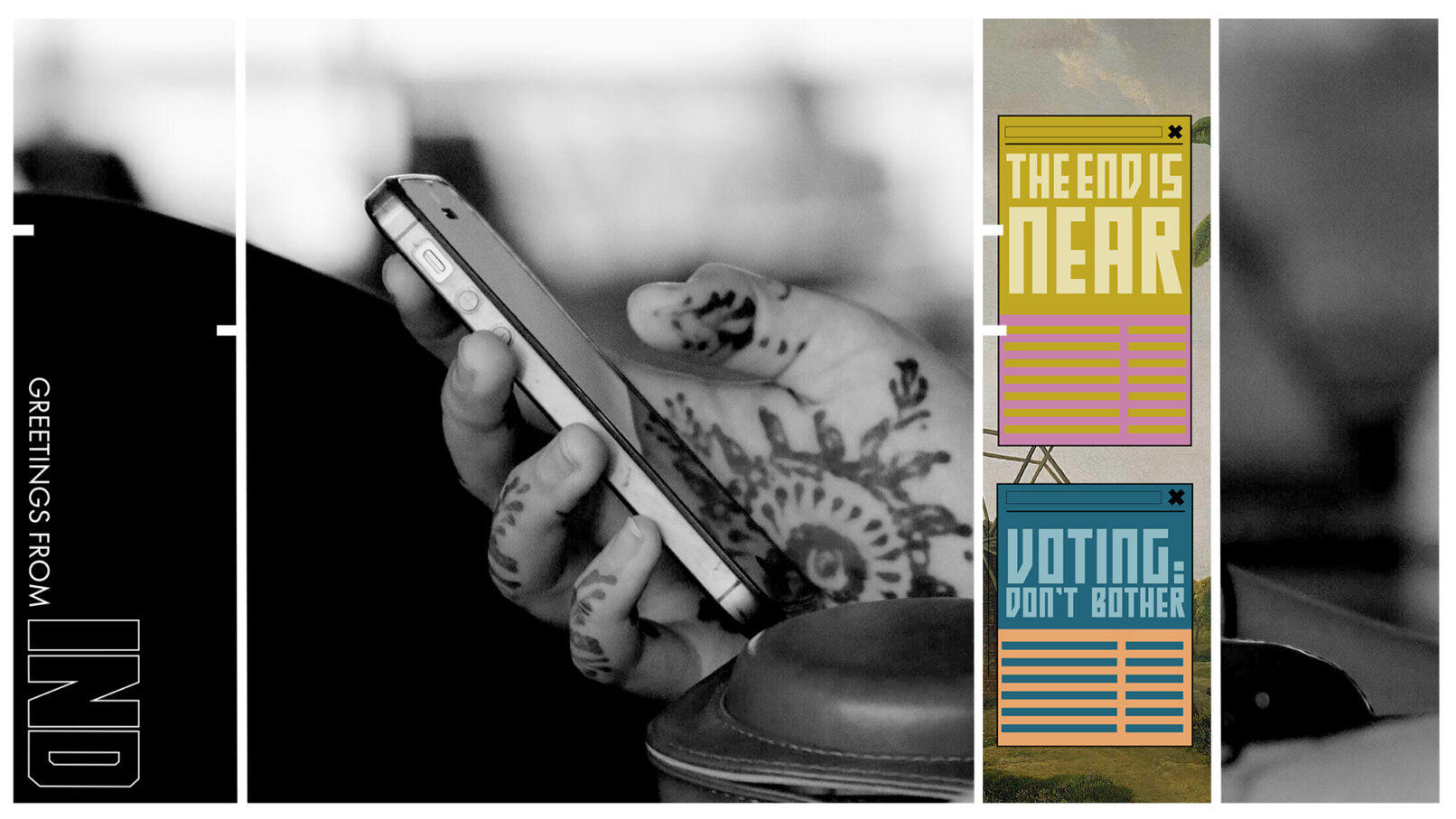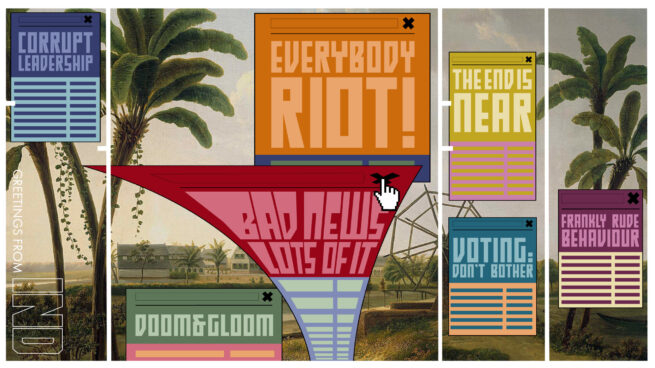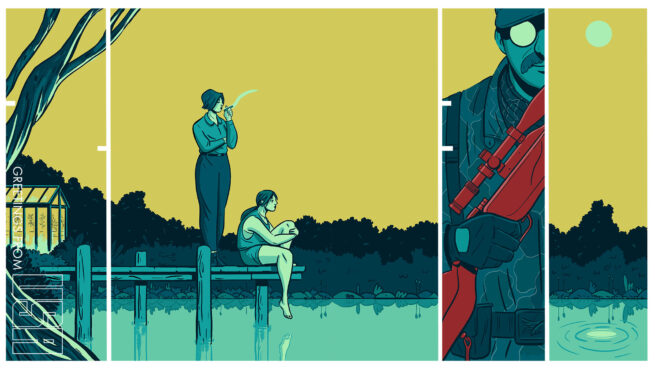Emrys: We often forget that identification by its very nature is intended to be exclusionary. You don’t design an ID system that supports open access to a service or right for entitlement. Because if it’s completely open, why do you need to identify who this person is in order to determine whether they have access or not? We should actually be talking, I think, much more about identity exclusion as the primary function that these systems play.
If we link back Aadhaar to Lavanya’s story, we see that these different ways of tracking who people are, and tracking certain attributes of this person — their health status, or their geographic location…, or their welfare, their entitlement to certain welfare distribution —all of this is about saying: can we say no, actually? Can you not have sugar with your coffee? Are you not actually entitled to this distribution of rice or gas or whatever Aadhaar might be enabling for a particular individual…
Identification in the story is primarily identification based on passively generated data points. The behaviours that this individual is doing are captured, exploited, monetized.
Aadhaar reflects a very different kind of legal relationship between the individual and the state.
I know that Aadhaar isn’t a reflection of citizenship, and therefore deals with status. But it’s a reflection of residency and it’s used to manage the relationship between the individual and the state…
I think we need to start thinking about […] the worst case scenario — what happens if this data falls into the hands of people who are going to use it for the worst intents possible?
At the same time, we also need to […] understand better tools and technologies that might … enable the benefits of identification technologies but mitigate some of the harms.
We are all living in an increasingly digital world, and digital data is increasingly personalized — personal data can make things better suited to us, but can also put us at much greater risk of targeted exclusion and inclusion.
One of the efforts to address the concerns around Aadhaar has been to try and open source it’s products. We need to recognize the limits of open sourcing technologies. It’s not the closed or the proprietary or open source nature of the technology that may be the issue in question. Power is still going to be able to be exercised through MOSIP as much as it does through Aadhaar or through AIRE, the Huduma Namba or any other of the national ID schemes that we see in place and are increasingly concerned about.
Anjali: What are the positives we can look forward to when it comes to the future ? What things should people that are building these technologies, and these [identity] systems, actively need to think of when they are looking to build for a population… to build a technology that is fair, neutral? What are the positive things that are happening, whether it’s open-source or not, that we can take forward… in the next 10 years to build identity devices, technologies that are truly inclusive or… at least not intentionally exclusive?
Emrys: …all identification technologies reflect a relationship between the identifier and the identified. I think that is really important to recognize because it enables us to understand that it’s the dynamics of that relationship that are critical to thinking through ‘how do we design technologies that achieve a particular goal’?
If […] we are talking about trying to ensure equity in terms of control and power, then I think one of the great things digital technologies enable is transparency – [digital technology] enables everything to be logged. There is huge potential in making the way identification systems, both state-based identification systems for individuals but also social identification platforms and services, far more transparent.
One of the great things about the Estonian ID system is that every individual can look at their record and see who has accessed their data. They don’t necessarily have the control to stop it, but [they] can at least see who’s accessed [their] data, and hopefully why.
I also think there are huge efficiencies to be gained. We shouldn’t get seduced by the siren call of efficiency as an unquestionable good.
One of the things we found doing the research around Aadhaar was how actually those frontline bureaucrats, as individuals who manage access to certain welfare entitlements […], are able to make sure that if your biometric fails, or if I’m sick and I have to send my brother […], that they are able to negotiate the rules to ensure that the spirit of what’s entitled, or meant, is realizable, without being constrained by the rigid ‘computer says “No”’.
There are innovations in the world of cryptography, of technological design, that can mitigate some of the potential abuses for technologies. For example, MasterCard and ICRC are investing in researching and putting in place technologies where biometric data can be encrypted. A token of that encryption is then used as your identifier, and that limits the access to that biometric data, which can be a source of exclusion or targeting.
I think there are also really big innovations happening in the world of decentralized, or federated, databases and systems.
Malavika: I think the issue with identity, and pitching it right, is similar to privacy. They are related concepts because there’s a zone of privacy that we don’t want in the law; but it’s similar to that of identity in that, being invisible is exclusion, but being so visible that you will not get services is also exclusion.
In its best form, a proper identity system can visibilize people, while maintaining their control over their graded information sharing.
I often find it hard to say graded information sharing because what we’re talking about here is ‘who gets to know what about us’ and ‘who decides what needs to be known’? Because knowledge is the ultimate gatekeeper —especially in these very knowledge-based societies.
At the highest level, I think [what] a good identity system could do is think carefully at the design stage of whether something needs to be gated.
One of the positives of the Aadhaar system is that it had a ready-made contactless payment system for India; and most underprivileged, low-income people were able to get access and get included through the system.
A good ID system would also include feedback loops. One thing we saw is that as transactions jumped — like double, tripled, quadrupled – in the months after the lockdown, transaction failures also quadrupled. Millions were coming to one provider because of biometric authentication failures. Another was coming from silver downtimes between the bank and the payment switch.
A lot of these failures, or these highly engineered systems, many of them are not in the control of the individual at all. A lot of that has to do with good systems, technical systems, cryptography, cybersecurity…
The last thing I want to say is around design and operationalization. [When it’s] something that’s totally not required — whether it’s your street level bureaucrats saying ‘I want your Aadhaar to give you a school application’ —there are some legal tests which have come up, which also are good design tests, at least in India. But you see it happening in every country. So, there is a theme here we can draw from — which is to ask ‘Is it necessary?’
And then, when you say ‘It is necessary’, you make the determination.
Then you ask, ‘Is it legitimate? Do you need this? Is it legitimate for the purpose?’
And then finally, if it is necessary and legitimate, to ask, ‘Is it proportionate?’
Does that coffee maker in ‘Your Cup Runneth Over’ really need to know your health status records?
Whichever order you want to do that in, it will make [design and operationalization] stronger.
The final thing I will say — we need much more [qualitative research] because fundamentally if that person is not at the table, when the system is being designed, then it’s very hard, ten years down the line, to [rectify that omission]. So it is a good idea to have every kind of user at the table, and at least most majority users at the table.
Anjali: It just brings to mind how constantly evolving the subject is with all the changes that are going on, technology obviously, but then regulation as well.
I want to thank you both very much for your time, and I’m going to read out the last paragraph of the story because it’s quite poetic and we touched upon it today in the beginning where we spoke about the philosophical aspect — Lavanya says:
You’re oblivious to the role you play on this planet, but it’s an important one. You’re a grain of sand on this massive subcontinent, being knit together with other specks of humanity like you. You’re being spun into a perfect sphere of glass. Transparent, empty and practically invisible. Beautiful and easy to shatter if required.
Go on, then. Take a sip of that perfect cup of coffee. You’ve earned it.



